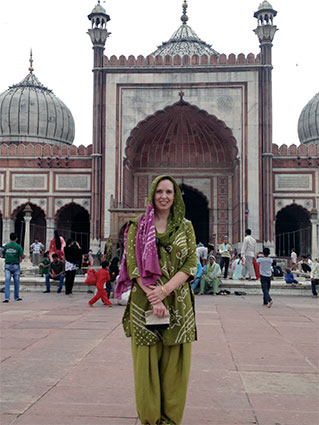 The first book by University of Alabama at Birmingham Associate Professor of Art History Cathleen Cummings, M.A., Ph.D., “Decoding a Hindu Temple: Royalty and Religion in the Iconographic Program of the Virupaksha Temple, Pattadakal,” has been published.
The first book by University of Alabama at Birmingham Associate Professor of Art History Cathleen Cummings, M.A., Ph.D., “Decoding a Hindu Temple: Royalty and Religion in the Iconographic Program of the Virupaksha Temple, Pattadakal,” has been published.
Cummings is a faculty member in the UAB Department of Art and Art History, part of the College of Arts and Sciences.
The book interprets the visual images and symbols of the temple. Queen Lokamahadevi, the chief wife of the early Chalukya king Vikramaditya II, began construction of the temple in approximately 733, at the dynasty’s royal consecration site of Pattadakal in Karnataka, India. Dedicated to the Hindu god Shiva and adorned with carved images of Shiva, Vishnu and other deities, the Virupaksha Temple is widely considered one of the most important of the freestanding structures erected during the Chalukya era, and it represents the zenith of temple construction of its period, Cummings says.
“Although this temple has been studied for more than a century and appears in virtually every textbook on Indian art, its iconographic program has never been fully explored,” Cummings said.
The work demonstrates that the visual images and symbols of the temple express royal aspirations, both material and spiritual, and past successes. Specific imagery that legitimizes the king through references to his genealogy and lineage, his royal marriage, and his conquests and defeats of other rival monarchs are identified, as well as his role in upholding the social order, she says. The book also looks at the issue of female patronage to show that the temple reflected the importance of the role of the queen to the functioning of the kingdom.
“Decoding a Hindu Temple: Royalty and Religion in the Iconographic Program of the Virupaksha Temple, Pattadakal” received the 2011 American Institute of Indian Studies’ Dimock Book Prize for best unpublished manuscript in Indian studies. The South Asian Studies Association published the book. It is available for purchase onAmazon.